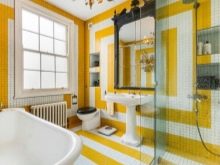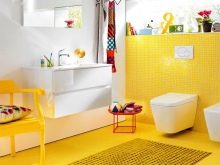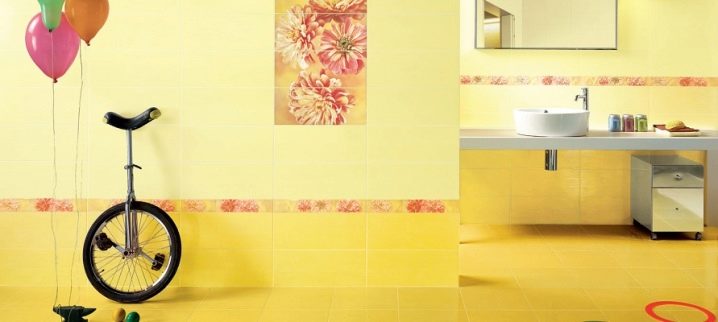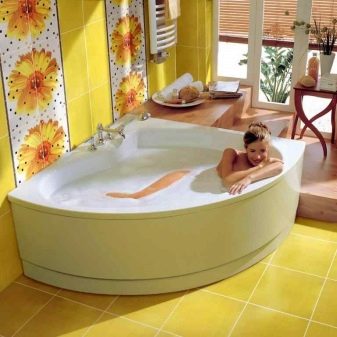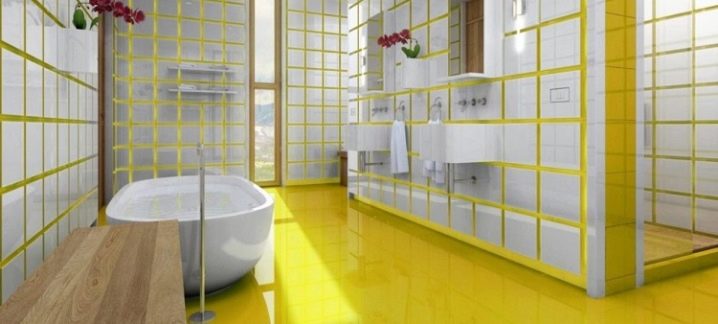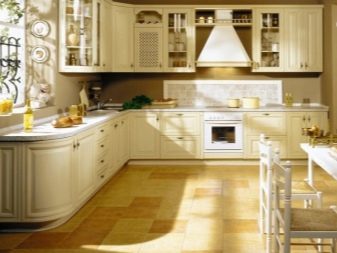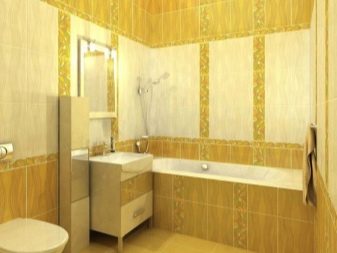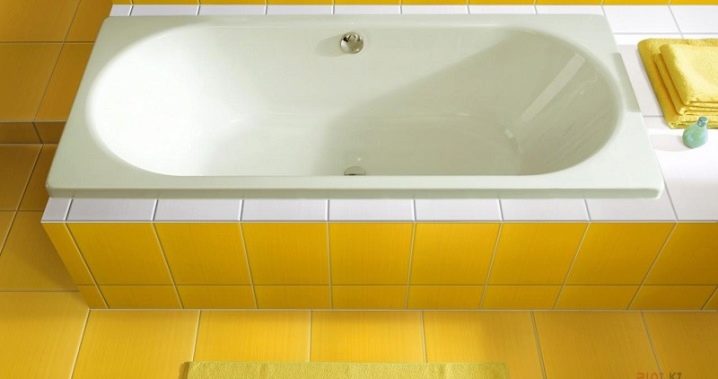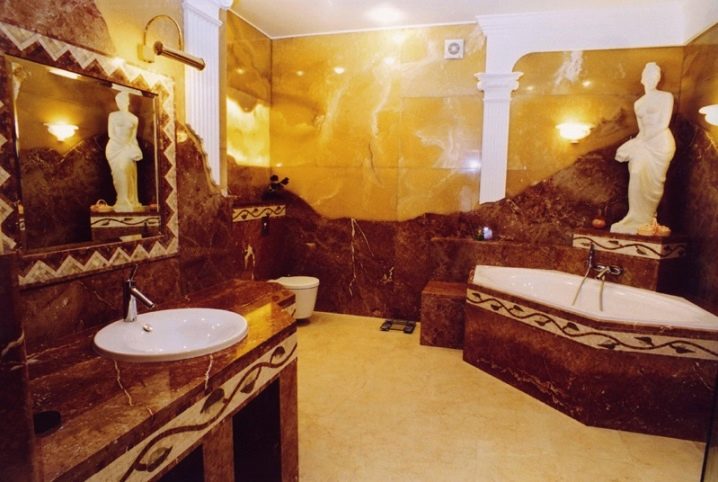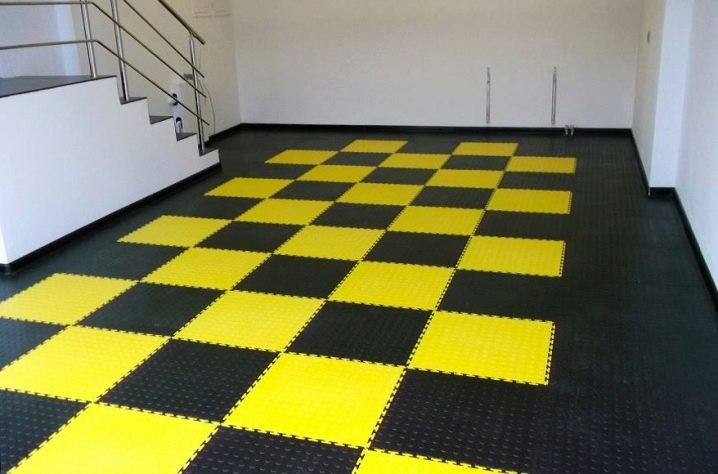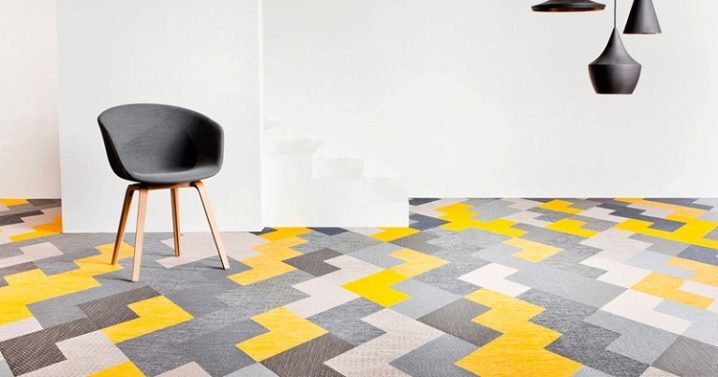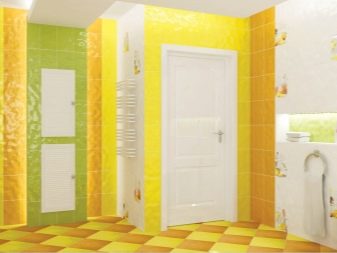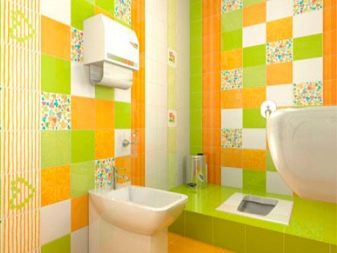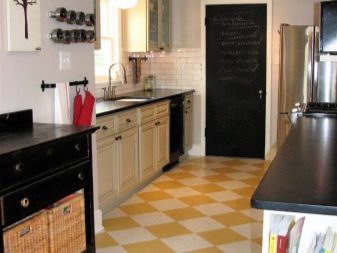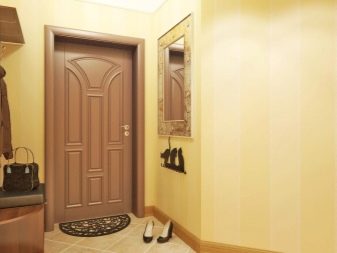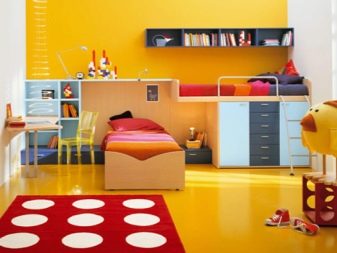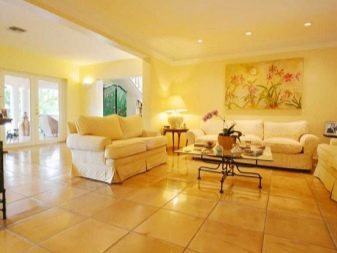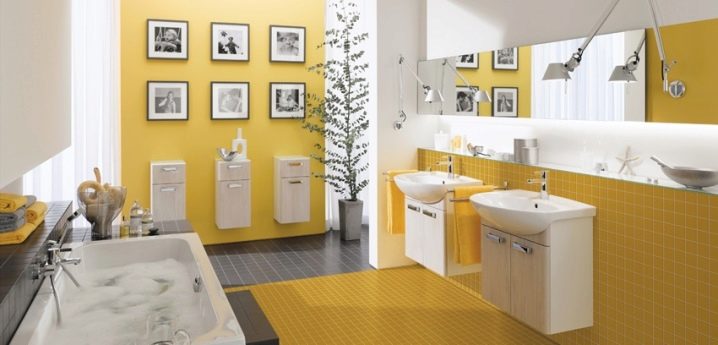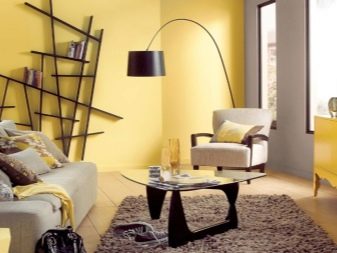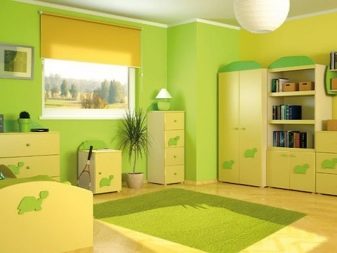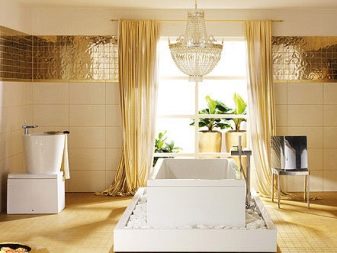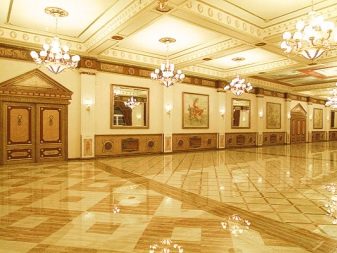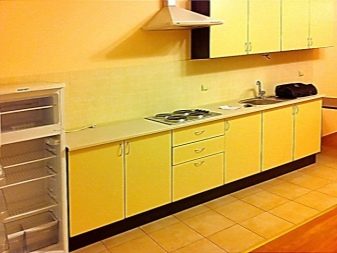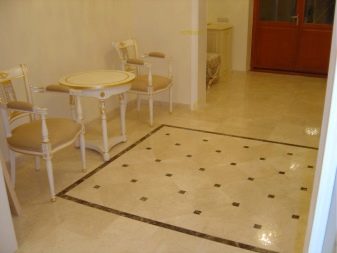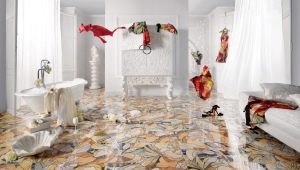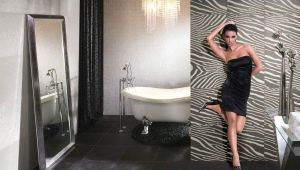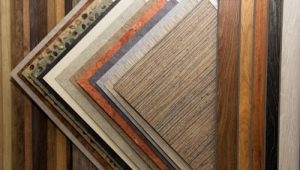Yellow floor tiles: interesting floor decoration options in the interior
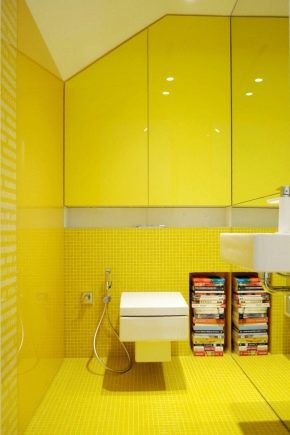
Yellow color is often used in the interior. Choose it and when buying tile flooring. At the same time, the monotony does not threaten you at all, because such a tile can be different depending on the material and design nuances.
Special features
Since the floor tile is constantly affected, it is subject to increased demands. Tile should be:
- durable;
- resistant to external influences (moisture, cold, high temperatures, sunlight);
- non-slip;
- safe (do not cause allergies and do not contain toxic substances);
- durable.
Do not think that color can narrow the range of choice. Yellow tiles can be different:
- matte and glossy;
- smooth and textured;
- monophonic and with drawing.
Yellow color has many shades: sand, lemon, fawn, golden and others.Also, this tile can have a different shape (square, rectangular, figured). The feasibility of choosing one form or another depends on the type of room, the amount of material needed, financial capacity, and most importantly - the stylistic conformity with other elements of the interior.
When choosing a tile should pay attention to the method of laying. For installation of some types of material it is necessary to remove the old finishing coating. For others, this is not a hindrance; they do not require any preliminary floor preparation work. Besides, most types of such coatings have low thermal conductivity and are unpleasant to the touch. Therefore, before installing them, you need to think about this nuance. You may need to pre-install floor heating.
Kinds
Porcelain stoneware - made from a mixture in which kaolin and quartz dominate with small additives to improve properties. The mass is first pressed and then burned. According to the structure, the porcelain tile is homogeneous and, accordingly, is painted completely yellow.
The advantages of this material are durability, resistance to abrasion, heavy loads, humidity, low and high temperatures.Of the minuses can be noted the complexity of installation, which requires the help of specialists.
Ceramic - more difficult to manufacture material with a variety of design variations. First, the base is pressed, then covered with a layer of glaze and calcined. Glass is usually used as a glaze, which, in turn, is enameled.
This tile is also called decorative. It is presented by a wide model range in various shades with various ornaments. Unglazed yellow elements look simpler. As a rule, they are opaque and have no pictures.
The advantages of ceramics: frost resistance, low moisture absorption, hardness, long service life. However, with a point-like mechanical impact, the upper layer can be chipped.
Stone - it is made of artificial or natural granite or marble. Such tiles can not be monotonously yellow, because, as in any coating of stone, there are visible streaks and inclusions.
This type of coating meets all the requirements of strength and durability. However, its vulnerable points are discoloration due to acids (including fruit) and the large weight of the finishedproducts that make it difficult to pack and deliver.
Soft (synthetic) - made of polymer. This tile can be smooth or have a nap. The features of the material are reduced injury risk and ease of dismantling (both completely and to replace one element).
Of the minuses we can note the destruction of the coating under the influence of high temperatures, poor resistance to abrasives and chemicals and a relatively short service life (half as compared with solid tiles).
Vinyl (or its kind with the addition of sand - quartzvinyl) - consists of several layers: polymer, decorative, vinyl and film. The decorative layer can be monophonic or have a pattern (including imitating wood or stone). This type of material is notable for its lightness, good shock absorption, resistance to moisture, cold and chemicals, and high heat transfer.
Using
The first place that comes to mind when we speak of floor tiles is bathroom. There tiled flooring is a must, since it prevents water from leaking down and is easy to clean.Special anti-slip treatment can make the bathroom environment safe. Bright sunny design compensates for the lack of lighting, especially if the yellow color will be present not only on the floor, but also on the walls.
Another place where tiles are the most suitable flooring material is kitchen. Gloss adds a light and volume to the kitchen. Since a positive attitude plays a significant role in the process of cooking, a yellow tile for the floor will help to create it. Do not spoil the mood and cleaning, since the grease and dirt from the ceramics can be easily washed with any detergent.
For practicality, floor tiles are often used in the hallway. The yellow color that greets guests helps to create a pleasant impression about the hosts.
In the children's room You can use soft tiles. It is pleasant to the touch, softens the fall and is the least slippery option. Of course, lint-free vinyl and polyurethane are more preferable, as they do not absorb paints and other liquids. The most polluted tiles can be easily removed, washed and installed back.Yellow color stimulates mental and physical activity, energizes, which is why children love it very much.
In the living room yellow tile is also appropriate. Often, in order to please all members of the family, the interior of the common room for rest and reception of guests is intentionally neutral. Warm shades create an atmosphere of comfort and goodwill.
Floor tiles of yellow color made of stone and porcelain stoneware are also widely used for decoration of public places. It can be seen in cafes, hospitals, shopping centers. Part of the demand is due to those practical qualities that combine these materials.
However, such a coating is a good choice and from an aesthetic point of view, it looks unobtrusive, but at the same time stylish.
What problems can be encountered when laying tiles and how to solve them will be learned from the following video.
Beautiful examples
Even violent yellow fans should not use the same shade for all surfaces in the room. The same goes for furniture. Focus on one thing. Some kind of interior detail or piece of furniture can be made bright yellow, while a quieter matte floor will be an excellent background for them.
However, the interior, made entirely in yellow, is rare.The most popular is the combination of this color with green. The main thing is to choose shades in one key (warm or cold).
Yellow tiles can be combined with the same confidence with white and golden decorative details. Of course, in combination with gold, it is worth choosing a material without glitter, so that the decor elements do not compete with each other.
Tile "under the gold" or with gold lettering can be seen in the apartments, decorated with special luxury. The mirror surface of the floor only increases the effect of gilding. As a rule, such premises are made in a yellow-brown range, since these two colors and their various shades are perfectly combined with each other.
Using different types of flooring is one example of zoning. This technique can be used if the kitchen and dining area is located in the same room or it is a studio apartment, where there are no partitions. In this case, the workplace of cooking can be distinguished by tiles of lemon color in the tone of kitchen furniture.
Tile "under the stone" is always relevant. The fashion for naturalness, and, respectively, and on natural materials does not pass.Therefore, a pale yellow natural coating will only emphasize the nobility and elegance of the classic interior.
The wood of some species has a pronounced yellow tint. Such a design would be appropriate in almost any interior, made in one of the modern styles.
